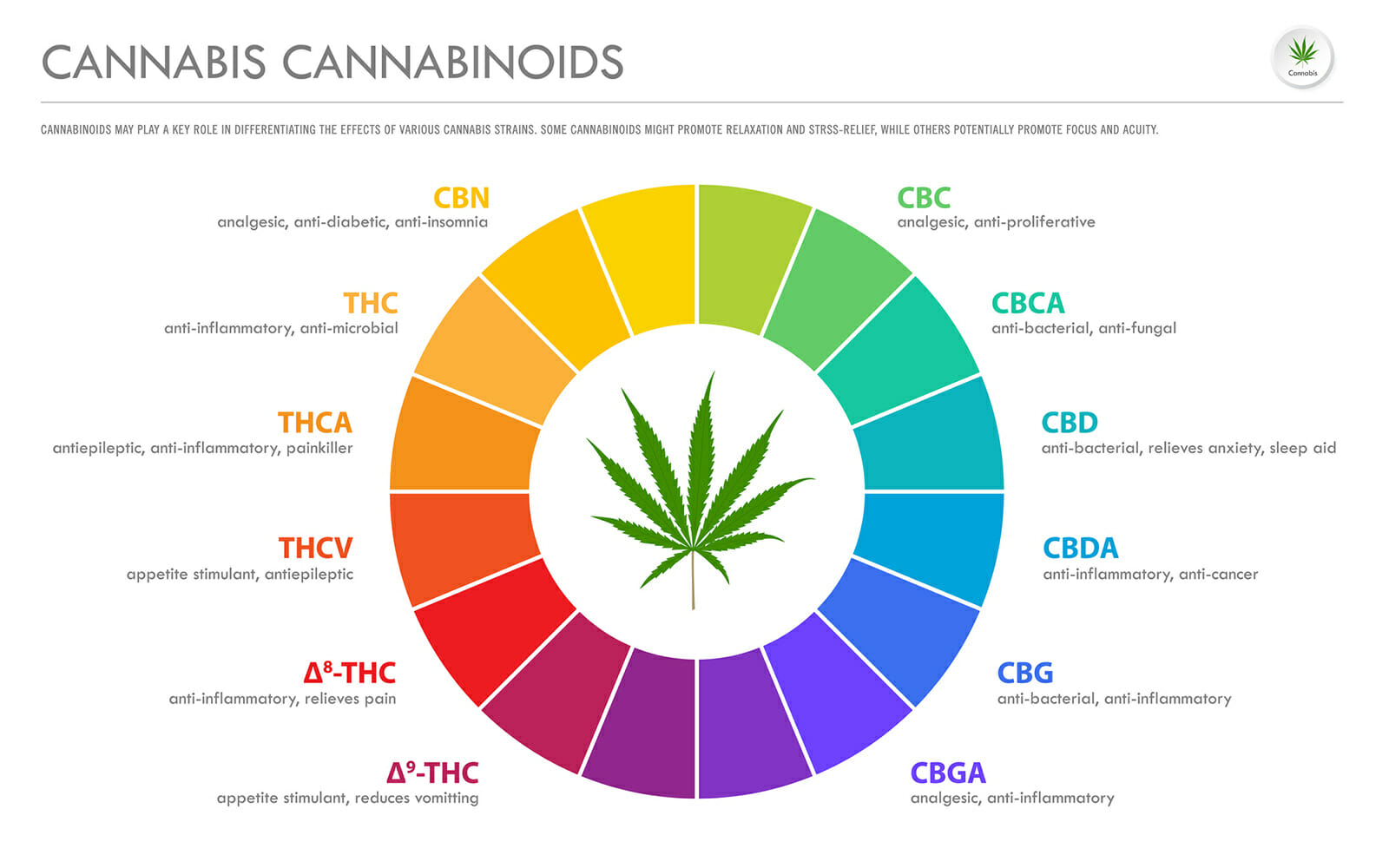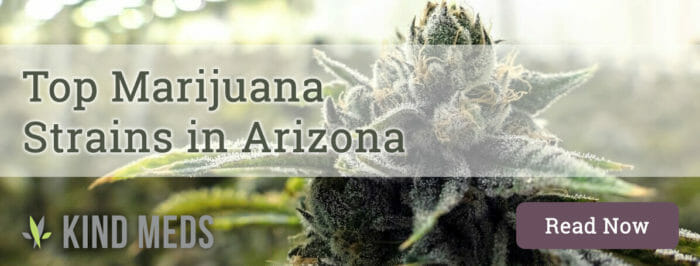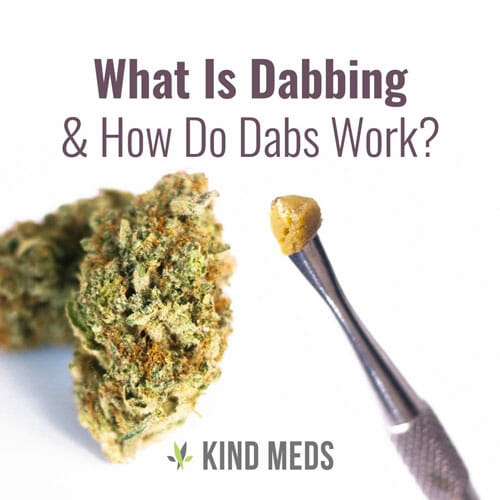The Different Compounds Found in Cannabis That Create What We Know and Love
Written by Chris Weatherall on Jan 11, 2022
The best-known compounds found in cannabis are cannabinoids, THC, and CBD. However, according to a cannabis study, there are hundreds more chemical compounds that have been found within the plant.
Here’s what you need to know about the many different compounds in cannabis.
Cannabinoids — The Basics
Cannabinoids are the primary compounds created within the cannabis plant. These chemical compounds are what give the different strains of cannabis their known properties and effects.
Cannabinoids work by interacting with the body’s endocannabinoid system (ECS). When cannabis enters the bloodstream, cannabinoids bind to the receptors inside the ECS. The main receptors in the ECS are referred to as the CB1 and CB2 receptors, which are spread throughout the body.
When cannabinoids bind to ECS receptors, they help to support the receptor’s job or they work to modify the receptor. In this way, cannabinoids can help address problems in the body such as inflammation, pain, or poor appetite. Each cannabinoid may interact differently with the ECS depending on its properties. That’s why it’s so important to learn about the different cannabinoids and compounds within cannabis before deciding what type of cannabis to use and how to use it.
The Most Common Cannabinoids
While the body produces some of its own endocannabinoid ligands capable of bonding to ECS receptors, many of the most effective cannabinoids come from plant sources. Phytocannabinoids, cannabinoids that come from plants, are among the most important compounds found in cannabis.
(click the image to enlarge in a new window)
The most common cannabinoids include:
Tetrahydrocannabinol (THC)
THC is known for its chemical effects, which produce a psychoactive “high” when it binds with certain cannabinoid receptors in the brain. This psychoactive “high” is what most people still associate with cannabis use today. THC also has medicinal properties, such as helping to combat pain. THC can be found in a wide range of products.
Tetrahydrocannabinolic Acid (THCA)
Unlike THC, THCA is not a psychoactive cannabinoid. THCA slowly converts into THC over time through a chemical reaction known as decarboxylation. Decarboxylation removes a carboxyl group, changing the chemical structure of THCA into THC. To feel any psychoactive effects, a user must speed this process along by heating, smoking, or vaping dried cannabis.
Cannabidiol (CBD)
Cannabidiol, most popularly known as CBD, is found in the trichomes of the cannabis plants like THC and THCA. These trichomes look like small, transparent hairs attached to the flowers and leaves of the plants. Because CBD is not psychoactive like its cousin THC, it has been the target of a wide array of research for many different medical purposes.
Cannabidiolic Acid (CBDA)
Cannabidiolic acid, or CBDA, is the compound that precedes CBD. Just like THCA is the precursor to THC, CBDA converts into CBD after a lengthy period or when it meets heat. Research has found that CBDA can not only help battle depression and nausea but also contributes to the anti-inflammatory effects sought from other cannabinoids. These anti-inflammatory properties are thought to come from enzymes associated with CBDA, which are like those the body naturally creates after an injury.
Cannabigerol (CBG)
While it is not as abundant as other compounds in the cannabis plant, like CBD or THC, CBG has been found to demonstrate unique properties. Researchers believe CBG may be an effective antibacterial, act as an anti-inflammatory agent, serve as a regulator for blood pressure, and may even be a sleep aid.
Cannabigerolic Acid (CBGA)
Cannabigerolic acid (CBGA) is a cannabinoid created and stored in the trichomes of the cannabis plant. CBGA works as a protectant for the plant but is more commonly known for being a foundational precursor for other cannabinoids as well. In fact, CBGA is often referred to as the “mother cannabinoid” as it plays a role in creating three other cannabinoids: THCA, CBDA, and CBCA.
Cannabinol (CBN)
Cannabinol (CBN) is a unique cannabinoid that is found more frequently as the plant ages. While the cannabis plant doesn’t create a large amount of CBN by itself, CBN is made from degraded THC. When THC is exposed to natural elements like harsh sunlight or oxidation, it begins to degrade and convert into CBN. CBN has shown promise in areas such as cancer and osteoporosis research and is a proven anti-inflammatory.
Cannabichromene (CBC)
Cannabichromene, sometimes referred to as CBC, is one of the most produced cannabinoids besides CBD and THC. The non-psychoactive CBC has shown promise in a variety of medicinal applications, such as serving as a neuroprotectant, acting as a pain reliever, and even showing potential at combating tumors. Researchers are currently determining whether CBC may be used as a treatment for Crohn’s disease.
Tetrahydrocannabivarin (THCV)
While tetrahydrocannabivarin (THCV) has a chemical makeup incredibly close to that of THC, the small difference between them means their effects are completely different. For example, THC is well-known for its ability to increase a person’s appetite as well as produce psychoactive effects. THCV, on the other hand, is an appetite suppressant that produces very mild psychoactive effects.
Cannabidivarian (CBDV)
Similar to THCV, the makeup of cannabidivarian (CBDV) and CBD are just slightly different. But, unlike THCV/THC, CBDV produces effects like isolated CBD. Unfortunately, there is not much research that focuses on CBDV, but it has shown promising results as an epilepsy treatment as well as to combat nausea.
Terpenes
Terpenes are the chemical compounds that give most plants their unique smell and flavor. With cannabis, in particular, terpenes play a role not only in the distinctive smell and taste of the plant but in how cannabinoids work within your body. In fact, terpenes are thought to be one of the primary reasons for the “entourage effect.”
The entourage effect is a concept that describes how the many different compounds of cannabis may work together to create enhanced effects versus when they are used individually. Overall, there are over one hundred different terpenes that have been identified in cannabis plants, all of which appear to help to bolster the plant’s effects.
The Most Common Terpenes in Cannabis
Some of the most abundant terpenes found in cannabis include:
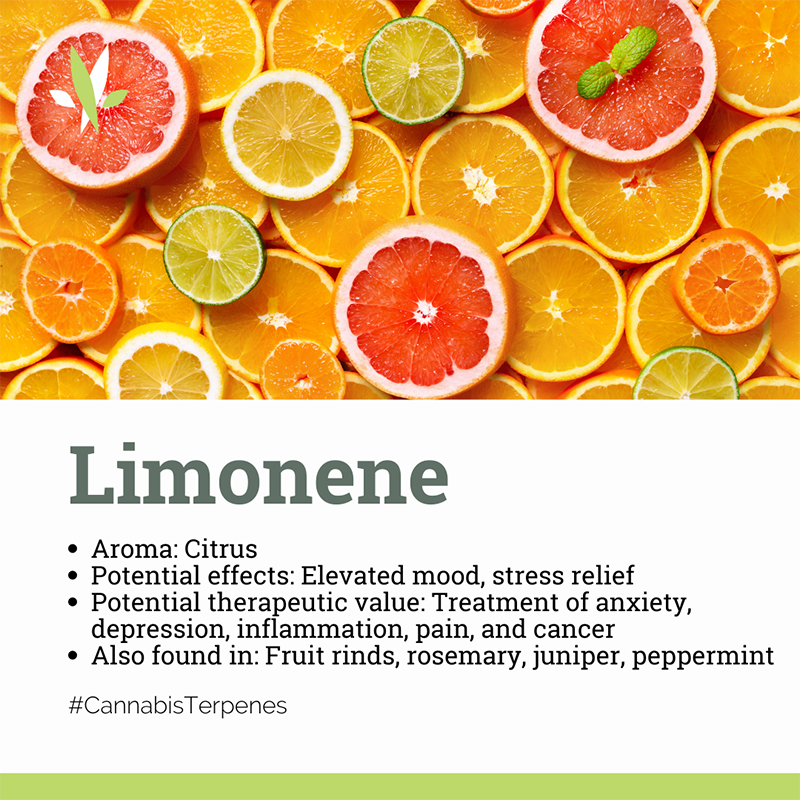
Limonene
Limonene is a common terpene found in cannabis that has a bright, citrusy smell. The terpene limonene is widely known to enhance mood-boosting effects as well as help with anxiety and depression due to its stress-relieving properties. It has also been found to help with metabolism and other digestive applications.

Myrcene
Myrcene is the most abundant terpene found in cannabis plants, regardless of strain. Its smell is both tangy and earthy, and its flavor can be compared to the hops used to make beer. In fact, myrcene is found abundantly in hops, as well as lemongrass and mangoes. Myrcene is known to have strong calming properties.

Pinene
Pinene is a terpene that is quite popular for its smell, which is that of pine trees. In fact, pinene is the substance found within the needles of coniferous trees that gives them their unique smell. Cannabis includes both alpha- and beta-pinene. Pinene is commonly known for being uplifting as well as having antibacterial, anti-inflammatory, and memory retention properties. This terpene is more prevalent in Sativa strains.
(Find which are the most popular strains in Arizona)
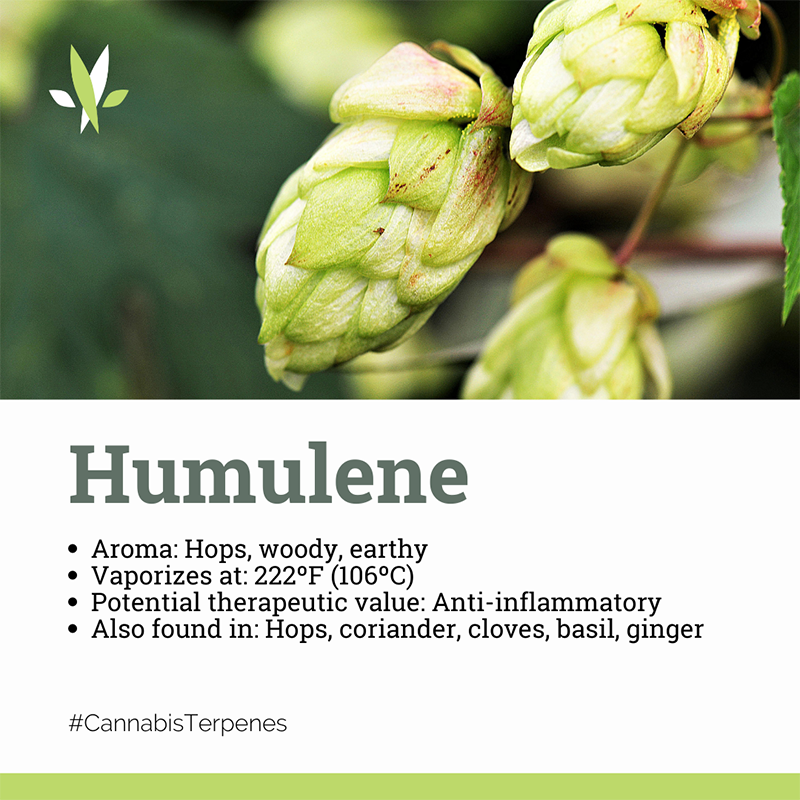
Humulene
The terpene humulene is known for its strong woodsy smell and has a taste that is often described as bitter and hoppy. Humulene is an ingredient present in hops that help to give beers like IPAs their unique taste. Humulene has been found to have anti-inflammatory and antibacterial properties.
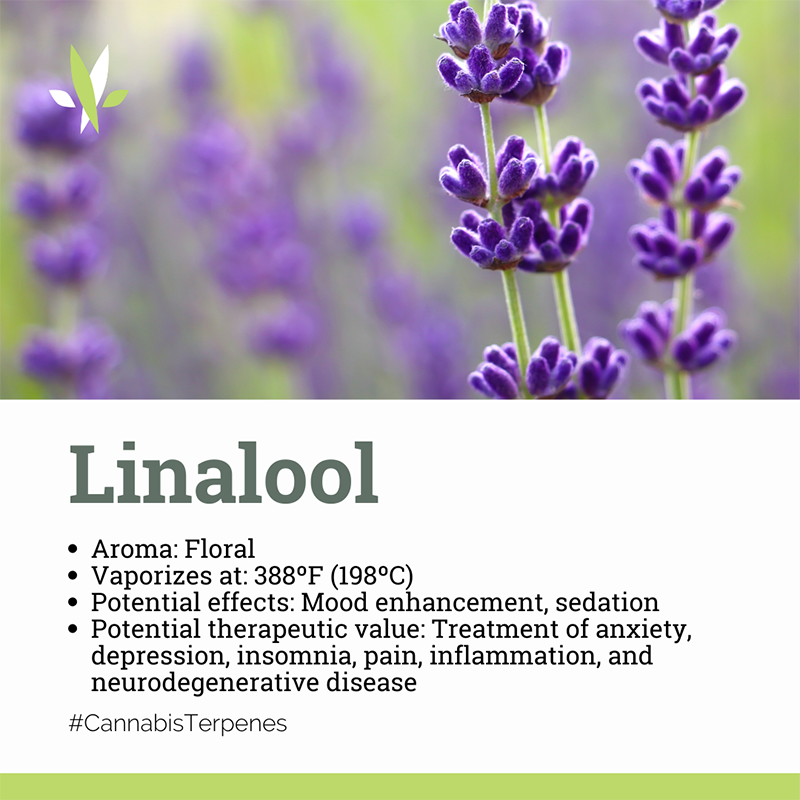
Linalool
This terpene is also found in lavender and is widely known for its sweet fragrance of florals and hints of citrus, which is why it’s often used for aromatherapy. It’s also an extremely popular terpene used in perfumes and for other fragrances. In cannabis, this sweet scent takes on a more earthy persona which gives it a unique smell. Linalool is known to have relaxing effects, and it’s believed that it is another antimicrobial, antibacterial, and anti-inflammatory terpene of cannabis.
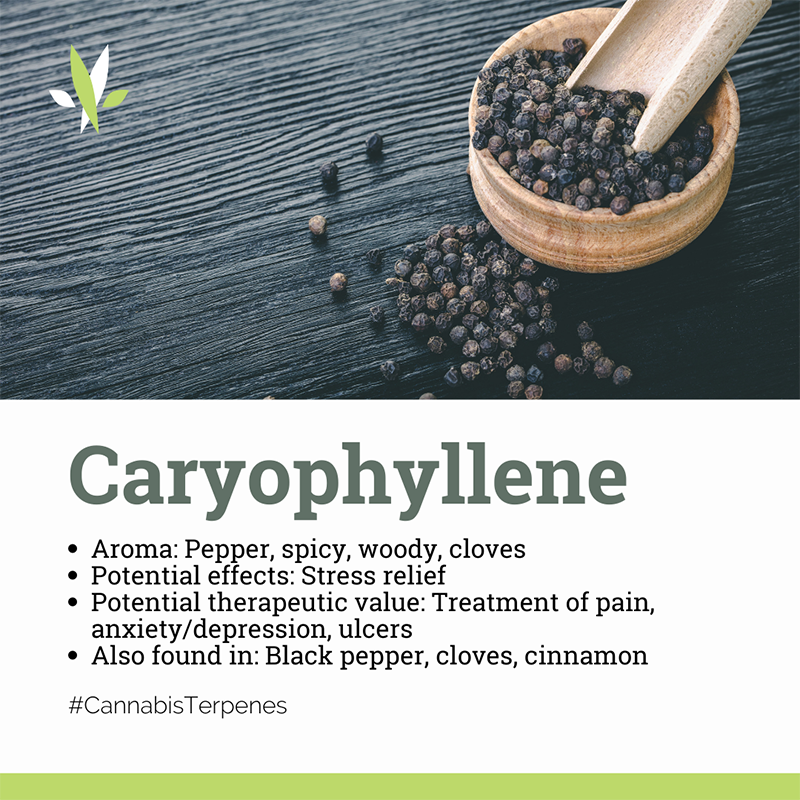
Caryophyllene
Caryophyllene is a terpene known for its peppery, almost spicy smell. Unsurprisingly, you can find caryophyllene in black pepper and other peppercorns as well. Caryophyllene is another cannabinoid popular for its stress-relieving abilities and helps in calming anxiety. Caryophyllene is currently one of the only terpenes known to directly bind to the cannabinoid receptors in the body’s ECS.
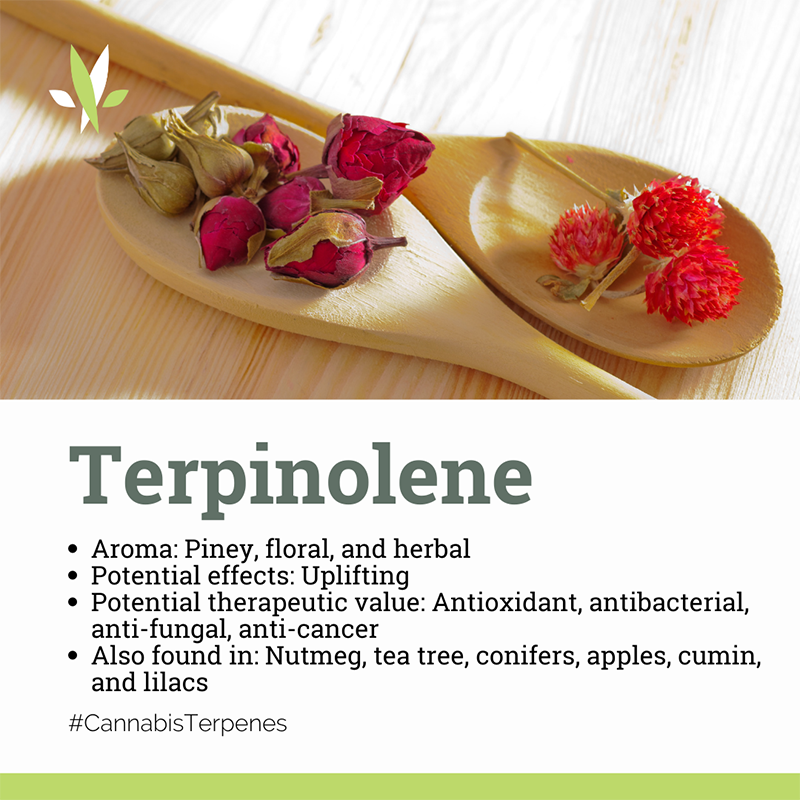
Terpinolene
Terpinolene is one of the most highly sought terpenes in cannabis products due to its ability to enhance THC’s psychoactive effects. The smell of terpinolene is much like that of common household herbs, with slight hints of pine and flowers. This terpene has been found to have long-lasting, uplifting effects and can help users relax. Terpinolene is also being studied for its ability to block pain signals.
Flavonoids
Flavonoids are another common type of chemical compound found within the cannabis plant. These compounds play a significant role in the appearance of a plant. Flavonoids are known for the color and rich pigmentation they give plants, as well as some contributions to the taste and smell. Flavonoids act as a plant defense against natural destructive elements, such as UV rays and bacteria.
Finding the Best Kind of Cannabis for You
We know just how hard it can be to navigate your way to the best cannabis product.
That’s why every member of our team has the knowledge and experience to help find a high-quality cannabis product you can trust to have the holistic effects cannabis is so famous for.
If you’re looking for premium CBD and THC in Arizona, we’re a cut above the rest.
We only carry the best cannabis brands available on the market.
Stop by our dispensary in Mesa to discuss what you’re looking for with one of our Dispensary Associates.



